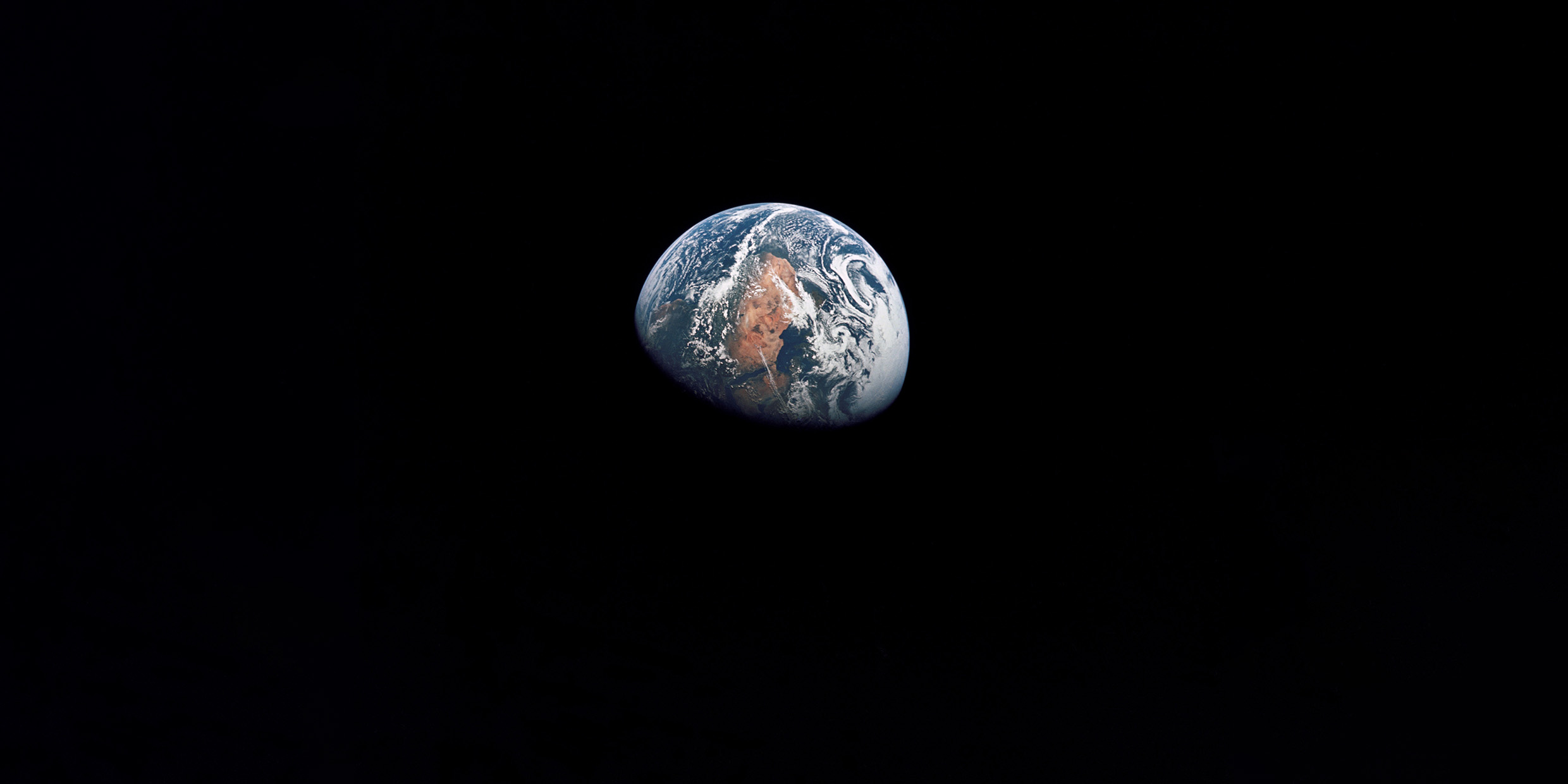Originally published 18 April 1988
A friend gave me a new poster from the Smithsonian Air & Space Museum called Space Explorers, a compilation of small portraits of all persons who have spent at least one Earth-orbit in space.
I was surprised. I knew that the number of people who have gone into space was large, but seeing them massed together impressed upon me the special nature of this remarkable confraternity.
At the beginning of [1988], 204 human beings had experienced the Earth from the overview of space. Seventy-six of those persons were launched into space by a Soviet vehicle. The remainder were passengers on an American craft. Soviet cosmonauts and American astronauts are designated on the poster by a red or blue bar under each portrait. If it were not for the colors you wouldn’t know East from West. The faces are strikingly similar — bright, eager, confident, and, to put it simply, human.
The youngest space explorers, a Soviet man and woman, were 26 at the time of their flights. The oldest, an American, was 58. Ten women have orbited the Earth. Among the faces on the poster there are representatives of many races. Nationalities include a Bulgarian, a Canadian, a Cuban, a Czech, a Dutchman, two Frenchman, an East German, three West Germans, a Hungarian, an Indian, a Mexican, a Mongolian, a Pole, a Romanian, a Saudi Arabian, a Syrian, and a Vietnamese.
Some of the names have the quality of legend, especially those from the early years. Yuri Gagarin. John Glenn. Valentina Tereshkova. Neil Armstrong. Others are only vaguely familiar. There are four Valerys. Seven Williams. Five Alexanders. Six Johns. Ten Vladimirs. Just folks. With the right stuff.
Patterns of blue and red
There are patterns of color on the poster, blocks of red or blue. At the top, the early sixties, dominated by Soviet red. Then a band of American blue, lofted into orbit by Gemini. Red again with the Soyuz spacecraft as Americans prepared Apollo. More blue with the grand adventure to the moon, and with Skylab. The middle of the chart packed with red, steady Soyuz, the reliable Soviet workhorse. Near the bottom of the poster, a massive bank of blue, the Shuttle, seats for eight, loaded like a bus. Then, red again, in the aftermath of the Challenger tragedy, Soyuz perfected, the Soviet turtle for the American hare.
But the faces on the poster do not evoke a sense of deadly competition. The smiles are too open, the eyes too uniformly full of curiosity. What comes across is the potential of space exploration for bringing the world together, across the boundaries that divide us.
Space writer Frank White has outlined how the view from space can contribute to a positive human evolution in his book The Overview Effect (Houghton-Mifflin, 1987). He lets the space explorers speak for themselves.
Here is Yuri Gargarin, the first human to enter space: “Trembling with excitement I watched a world so new and unknown to me, trying to see and remember everything.”
And Prince Sultan Salman al-Saud of Saudi Arabia, who flew on the shuttle: “I think the minute I saw the view for the first time was really one of the most memorable moments of my entire life. I just said in Arabic, ‘Oh, God,’ or something like ‘God is great.’ It’s beyond description.”
The “overview effect” was similar for most of the space explorers. The response of Michael Collins, who orbited the moon while Armstrong and Aldrin took the first steps in moon dust, is typical: “I think the view from 100,000 miles could be invaluable in getting people together to work out joint solutions, by causing them to realize that the planet we share unites us in a way far more basic and far more important than differences in skin color or religion or economic system. The pity of it is that so far the view from 100,000 miles has been the exclusive property of a handful of test pilots, rather than the world leaders who need this new perspective, or the poets who might communicate it to them.”
The rest of us can learn
More than 200 human beings have experienced the unique, transforming view of the planet Earth from space. The rest of us can be admiring, or envious — or we can learn from their experience.
Imagine if you will a Soviet-American collaboration on the next great human adventure in space — the exploration of Mars. An international crew of men and women fluent in each other’s languages. Star ships replacing Star Wars. Orbiting launch stations replacing spy satellites.
The faces on the Smithsonian poster display an openness and a readiness to embrace such a venture. Question: Can we find leaders with the courage and imagination to forge the alliance?
As of 2020, the list of humans who have experienced space travel has grown to over 560. ‑Ed.



